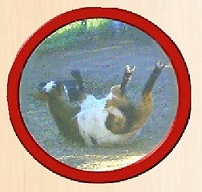
History of the Fainting Goat

Where Did Fainting Goats Come From?
The Fainting Goat can be traced back to the 1880s. This is the same decade as the famous Gunfight at the O.K. Corral in Tombstone, Arizona, and when Buffalo Bill Cody opened his Wild West Show with Sitting Bull, Geronimo, Calamity Jane, and Annie Oakley.
A farm worker named John Tinsley who traveled from place to place (perhaps looking for work) came to central Tennessee to the farm of Dr. Mayberry with four unusual goats that got stiff and fell down. It is believed that John Tinsley came from Nova Scotia, Canada, but no one knows where he found his unusual goats.
After only a year, John Tinsley moved on and left his goats (one buck and three does) on Dr. Mayberry's farm. Dr. Mayberry began to breed the unusual goats and found that their babies got stiff and fell down too. He concluded that this must be a different kind of goat and called them Tennessee Fainting Goats.

What Makes Fainting Goats Faint?
Fainting Goats have many names. Some people call them Myotonic Goats, Tennessee Fainting Goats, Tennessee Meat Goats, Texas Wooden Leg, and even Stiff-legged, Nervous, and Scare goats.
All the different names have come from a breed trait known as myotonia (my-o-toe-ne-ah) congenita
(kon-jen-ə-tah) which only effects skeletal muscles (muscles the we use to move our bones). It is congenital, meaning that it is present when the goat is born. This condition occurs in many species, including humans.
The goats do not really faint. They remain fully conscious. When they are startled or overly excited, their muscles stiffen (or freeze). If the goat loses its balance, it will fall over. Once their muscles relax, they jump up and are off again. Younger goats fall over more often than older goats. Older goats learn to spread their legs or lean against something. Sometimes they even continue to run in an awkward, stiff-legged shuffle.
What Classification of Goat is the Fainting Goat?
Fainting goats are classified as a meat goat as opposed to a dairy goat. There are breeders who raise Fainting Goats for chevon (goat meat). However, since this breed is listed as threatened by the American Livestock Breeds Conservancy, the Fainting Goat is not used as often by meat producers since its rarity makes a live goat more valuable. Of note, due to the increased popularity of the Fainting Goat, as of 2009, they have been moved from a Threatened status to a Watch status by the American Livestock Breeds Conservancy Priority List. This means that there are a lot more Fainting Goats in the United States than there use to be just a few years ago.